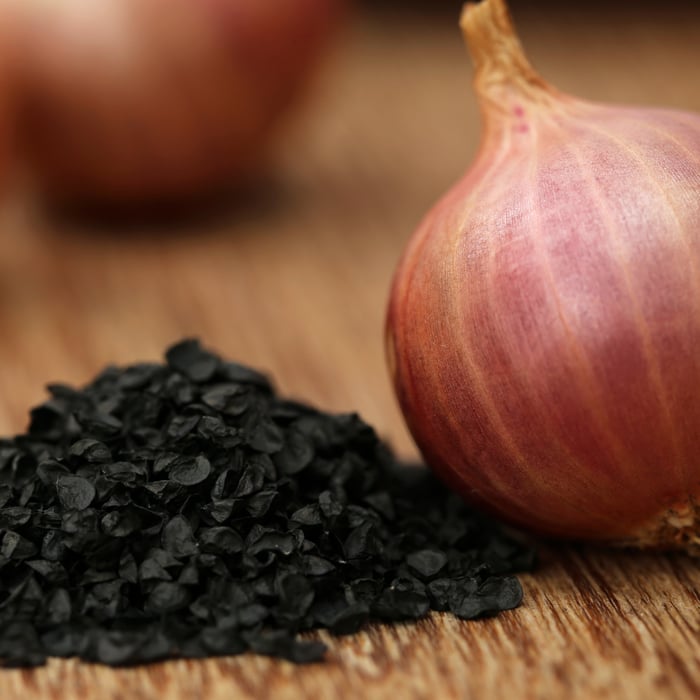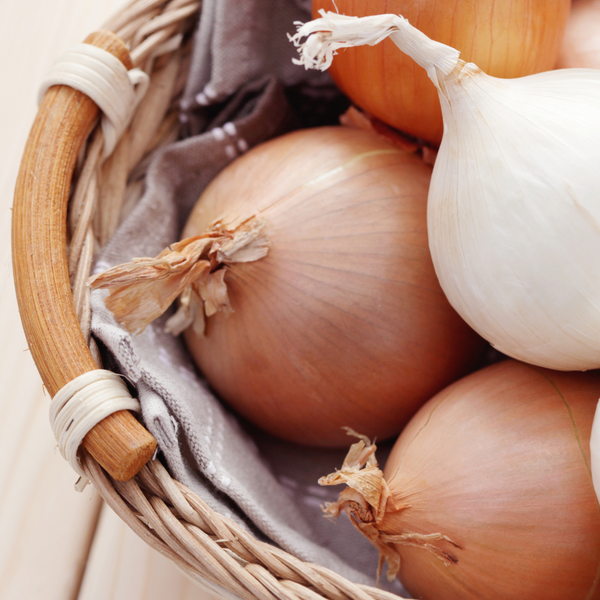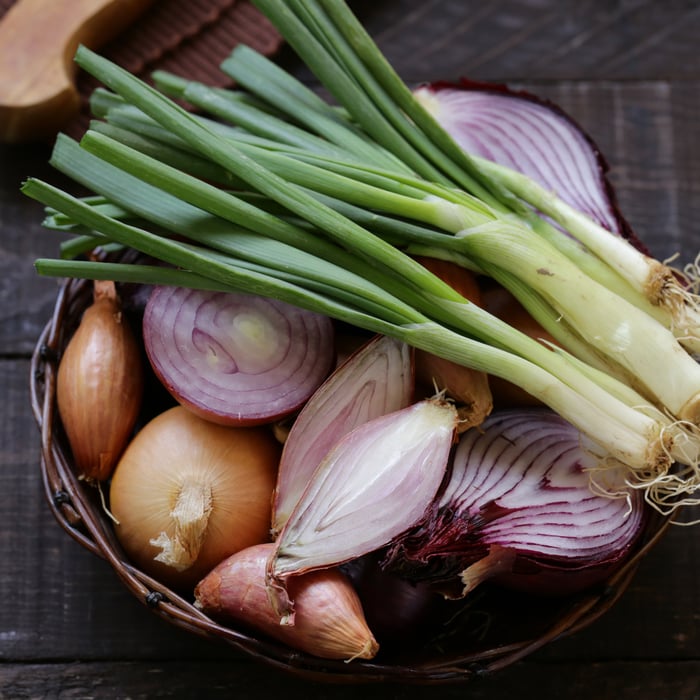Onions are a staple in most gardens. They are versatile vegetables that can get used in most dishes to add flavor and texture. Growing onions is not too hard, there are a few steps that need to be followed for the best results. Come learn how to grow onions from seeds.
How Long Does It Take for Onion Seeds to Germinate?
Onion seeds are relatively easy to grow, but they do require some patience. Germination time can vary depending on a number of factors, including soil temperature and moisture levels. In general, onion seeds take around 7-14 days to germinate.
The first step to successful onion seed germination is to start with good-quality seeds. Look for seeds that are fresh and have not been exposed to moisture, as moisture can cause the seeds to start germinating prematurely, which can lead to poor growth and development.
Once you have your seeds, it's time to prepare the soil. Onions prefer loose, well-draining soil that is rich in organic matter. They also require a pH of around 6.0-7.5 for optimal growth. To prepare the soil, till it to a depth of at least 6 inches and add plenty of compost or well-rotted manure.
Next, it's time to plant the seeds. Onion seeds should be planted at a depth of around ¼ inch, and spaced about 1 inch apart. Cover the seeds with soil and water gently to moisten the soil.
To promote germination, it's important to keep the soil consistently moist. Check the soil daily and water as needed to keep it from drying out. Be careful not to overwater, as this can lead to rot and other fungal diseases.
It's also important to keep the soil warm. Onions prefer soil temperatures between 65-75°F for optimal germination. If your soil is too cool, you may need to cover the seedlings with a cloche or plastic tunnel to help retain heat.
As the seedlings begin to emerge, you may need to thin them out to prevent overcrowding. Thin the seedlings to a spacing of around 3-4 inches apart.
Onion seeds take around 7-14 days to germinate. To promote successful germination, start with good quality seeds, prepare the soil well, keep the soil consistently moist, and ensure that the soil is warm enough. With the right care, you should have healthy, happy onion seedlings in no time!
What is the Best Soil Type for Growing Onions from Seed?
Onions require loose, well-draining soil that is rich in organic matter to thrive. While they can grow in a variety of soil types, some soil types are better suited for onion growth than others. This is a great way on how to grow onions from seeds.
Sandy soil is one of the best soil types for growing onions. It is loose and well-draining, which allows for good air circulation and root development. Onions grown in sandy soil tend to have a sweeter flavor and a more tender texture.
Loamy soil is also a good choice for growing onions. This soil type is a mixture of sand, silt, and clay, and provides a good balance of drainage and moisture retention. Onions grown in loamy soil tend to be larger and have a more robust flavor.
Clay soil, on the other hand, is not ideal for onion growth. It is heavy and dense, which can lead to poor drainage and air circulation. Onions grown in clay soil tend to be smaller and may have a more pungent flavor.
If you have clay soil, don't despair - it is still possible to grow onions successfully. To improve clay soil, add plenty of organic matter, such as compost or well-rotted manure. This will help to loosen the soil and improve drainage.
Another option for growing onions in clay soil is to build raised beds. This will allow you to create a custom soil mixture that is more suitable for onion growth.
In general, onions prefer soil with a pH of around 6.0-7.5. If your soil is too acidic, add lime to raise the pH. If it is too alkaline, add sulfur to lower the pH.
Onions prefer loose, well-draining soil that is rich in organic matter. Sandy and loamy soils are good choices for onion growth, while clay soil can be improved with the addition of organic matter. With the right soil preparation, you can grow healthy, flavorful onions from seed.
When is the Best Time to Plant Onion Seeds?
Onions growing season depends on the variety of onions you are growing. In general, onion seeds should be planted in early spring, as soon as the soil can be worked. The exact planting time will depend on your location and climate.
In regions with mild winters, onions can be planted in the fall for a spring harvest. This is because onions require a certain amount of cold weather to trigger bulb formation. If you are planting in the fall, aim to plant about 4-6 weeks before the first expected frost date.
In areas with colder winters, onions are typically planted in the spring. The ideal planting time will depend on your specific location and climate. In general, you should aim to plant onion seeds as soon as the soil can be worked in the spring.
When planting onion seeds, it's important to keep in mind that they require a certain amount of daylight to trigger bulb formation. Long-day onions, which include most varieties grown in the northern United States, require about 14-16 hours of daylight to form bulbs. Short-day onions, which are typically grown in the southern United States, require about 10-12 hours of daylight to form bulbs.
To determine which variety of onions to grow in your area, consult with your local cooperative extension office or garden center. They can provide recommendations based on your location and climate.
In addition to daylight requirements, onion seeds also require specific soil temperatures to germinate. Soil temperatures of around 65-75°F are ideal for onion seed germination. If your soil is too cool, you may need to cover the seedlings with a cloche or plastic tunnel to help retain heat.
The best time to plant onion seeds depends on your location and climate. In general, onions should be planted in early spring as soon as the soil can be worked. If you live in a region with mild winters, onions can also be planted in the fall for a spring harvest. Be sure to select a variety of onions that is suited to your location and climate, and provide the right conditions for successful germination and growth.
Onion Seed Assortment | 8 Variety Pack
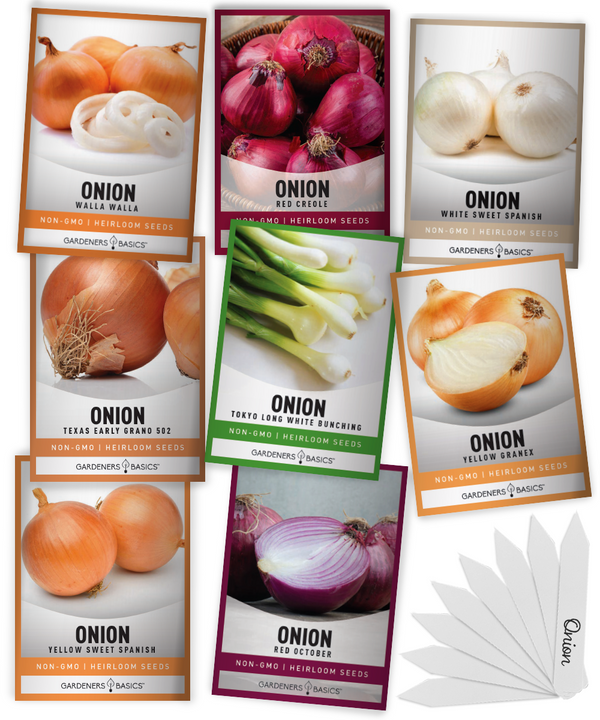
$15.95
Complete Onion Seeds Collection: 8 Non-Hybrid, Heirloom, Non-GMO Seed Varieties Introducing our 8 Onion Seeds Variety Pack – the perfect collection for home gardeners, chefs, and onion enthusiasts looking to grow a diverse range of flavorful onions! Each variety in… read more
Onion Seed Assortment | 8 Variety Pack

$15.95
Complete Onion Seeds Collection: 8 Non-Hybrid, Heirloom, Non-GMO Seed Varieties Introducing our 8 Onion Seeds Variety Pack – the perfect collection for home gardeners, chefs, and onion enthusiasts looking to grow a diverse range of flavorful onions! Each variety in… read more
Can Onion Seeds be Planted Directly in the Garden?
Yes, onion seeds can be planted directly in the garden. Direct planting is a good option if you don't have space to start seeds indoors or if you prefer to plant directly in the ground. They are best started indoors, however, to make sure they have a long enough growing season to form a bulb.
When planting onion seeds directly in the garden, it's important to prepare the soil well. Onions prefer loose, well-draining soil that is rich in organic matter. Till the soil to a depth of at least 6 inches and add in plenty of compost or well-rotted manure to improve soil structure.
Onion seeds should be planted at a depth of around ¼ inch, and spaced about 1 inch apart. Cover the seeds with soil and water gently to moisten the soil.
To promote germination, keep the soil consistently moist. Check the soil daily and water it as needed to keep it from drying out. Be careful not to overwater, as this can lead to rot and other fungal diseases.
As the seedlings begin to emerge, you may need to thin them out to prevent overcrowding. Thin the seedlings to a spacing of around 3-4 inches apart.
When planting onions directly in the garden, it's important to keep in mind the specific requirements for your variety of onions. Long-day onions, which include most varieties grown in the northern United States, require about 14-16 hours of daylight to form bulbs. Short-day onions, which are typically grown in the southern United States, require about 10-12 hours of daylight to form bulbs.
In addition to daylight requirements, onions also require specific soil temperatures to germinate. Soil temperatures of around 65-75°F are ideal for onion seed germination. If your soil is too cool, you may need to cover the seedlings with a cloche or plastic tunnel to help retain heat.
Onion seeds can be planted directly in the garden, but it's important to prepare the soil well and provide the right growing conditions. Be sure to select a variety of onions that is suited to your location and climate, and follow the specific requirements for that variety to ensure successful growth and bulb formation.
How Deep Should Onion Seeds be Planted?
Onion seeds should be planted at a depth of around ¼ inch. This is just deep enough to provide adequate coverage for the seed, while still allowing for good soil contact and moisture retention.
Planting onion seeds too deep can lead to poor germination and weak seedlings. If the seeds are planted too deep, they may struggle to reach the surface and emerge from the soil. This can also make it difficult for the seedlings to establish strong root systems, which can lead to poor growth and development.
In addition to planting depth, it's important to space onion seeds properly. Onion seeds should be spaced about 1 inch apart to allow for adequate room for growth. If the seedlings become overcrowded, they may compete for nutrients and water, which can lead to stunted growth and poor bulb development.
Once the seedlings have emerged, it's important to thin them out to prevent overcrowding. Thin the seedlings to a spacing of around 3-4 inches apart. This will allow each plant to have adequate space to grow and develop strong root systems.
When planting onion seeds, it's also important to keep in mind the specific requirements for your variety of onion. Long-day onions, which include most varieties grown in the northern United States, require about 14-16 hours of daylight to form bulbs. Short-day onions, which are typically grown in the southern United States, require about 10-12 hours of daylight to form bulbs.
In addition to daylight requirements, onions also require specific soil temperatures to germinate. Soil temperatures of around 65-75°F are ideal for onion seed germination. If your soil is too cool, you may need to cover the seedlings with a cloche or plastic tunnel to help retain heat.
Onion seeds should be planted at a depth of around ¼ inch to ensure good germination and strong seedling growth. Be sure to space the seeds properly and thin the seedlings as needed to prevent overcrowding. Follow the specific requirements for your variety of onions to ensure successful growth and bulb formation.
How Often Should Onion Seeds be Watered?
Onion seeds require consistent moisture to germinate and grow. When planting onion seeds, it's important to keep the soil consistently moist, but not waterlogged. Overwatering can lead to rot and other fungal diseases, while underwatering can lead to poor germination and weak seedlings.
When planting onion seeds, water the soil immediately after planting to help settle the seeds and provide adequate moisture. After this initial watering, continue to check the soil daily and water as needed to keep it from drying out. In general, onion seeds should be watered every 1-2 days, depending on the weather and soil conditions.
When watering onion seeds, it's important to water deeply to encourage deep root growth. This will help the plants to access water and nutrients more easily, which can lead to stronger, healthier growth. To water deeply, apply enough water to thoroughly saturate the soil to a depth of at least 6 inches.
If you are growing onions in containers or raised beds, you may need to water them more frequently than if you are growing them in the ground. Container and raised bed gardens tend to dry out more quickly, so it's important to check the soil daily and water as needed to keep it consistently moist.
In addition to watering frequency, it's also important to consider the timing of watering. Watering in the early morning is generally the best time, as it allows the plants to absorb moisture before the heat of the day. Watering in the late afternoon or evening can lead to moisture retention on the leaves, which can promote fungal diseases.
When watering onion seeds, it's important to avoid getting water on the leaves, as this can promote fungal diseases. Instead, water at the base of the plant and allow the water to soak into the soil.
Onion seeds require consistent moisture to germinate and grow. Water the soil immediately after planting and continue to check the soil daily and water as needed to keep it consistently moist. Water deeply to encourage deep root growth and avoid getting water on the leaves to prevent fungal diseases.
What is the Ideal Temperature for Onion Seed Germination?
Onion seeds require specific soil temperatures to germinate. In general, soil temperatures of around 65-75°F are ideal for onion seed germination. If the soil is too cool, the seeds may take longer to germinate or may not germinate at all.
To ensure the right soil temperature for onion seed germination, it's important to monitor the soil temperature closely. Use a soil thermometer to check the temperature of the soil at a depth of around 1 inch.
If the soil is too cool, you may need to cover the seedlings with a cloche or plastic tunnel to help retain heat. Another option is to use a heat mat to warm the soil. Place the heat mat under the seed tray or container and adjust the temperature as needed to maintain a soil temperature of around 65-75°F.
In addition to soil temperature, it's important to consider the air temperature when growing onions from seed. Onions prefer cool weather and can tolerate temperatures down to around 50°F. However, they do not tolerate extreme heat and may struggle to grow in temperatures above 90°F.
To protect onion seedlings from extreme heat, provide shade or cover them with a shade cloth during the hottest part of the day. This will help to prevent sun scald and wilting.
When learning how to grow onions from seed, it's also important to consider the specific requirements for your variety of onions. Long-day onions, which include most varieties grown in the northern United States, require about 14-16 hours of daylight to form bulbs. Short-day onions, which are typically grown in the southern United States, require about 10-12 hours of daylight to form bulbs.
Onion seeds require soil temperatures of around 65-75°F for optimal germination. Use a soil thermometer to monitor the soil temperature and adjust as needed to maintain the right temperature. Consider air temperatures as well and provide shade or cover as needed to protect seedlings from extreme heat. Follow the specific requirements for your variety of onions to ensure successful growth and bulb formation.
How to Fertilize Onion Seeds?
Onion seeds require a balanced and nutrient-rich soil to grow well. While they can grow in a variety of soil types, adding fertilizer can help to provide the essential nutrients they need for healthy growth.
When planting onion seeds, it's important to prepare the soil well by adding compost or well-rotted manure to improve soil structure and nutrient content. This will help to provide the basic nutrients that onion seedlings need to grow strong.
Once the seedlings have emerged, it's important to fertilize them regularly to ensure continued growth and development. Fertilizing should be done in moderation, as over-fertilizing can lead to excessive vegetative growth and decreased bulb development.
A balanced fertilizer with a ratio of 10-10-10 or 20-20-20 is a good choice for fertilizing onion seedlings. Apply the fertilizer at a rate of around 1 tablespoon per square foot of soil every 3-4 weeks.
When applying fertilizer, it's important to water the soil well before and after application to help distribute the nutrients evenly. Avoid getting fertilizer on the leaves, as this can burn the plants and cause damage.
In addition to commercial fertilizers, there are also several organic options for fertilizing onion seedlings. Compost, well-rotted manure, and fish emulsion are all good choices for providing the essential nutrients that onion seedlings need to grow.
When using organic fertilizers, it's important to consider the specific nutrient content and adjust the application rate accordingly. For example, manure can be high in nitrogen, which can lead to excessive vegetative growth if applied in large quantities.
Onion seeds require a balanced and nutrient-rich soil to grow well. Fertilize the soil before planting with compost or well-rotted manure, and apply a balanced fertilizer every 3-4 weeks after the seedlings have emerged. Consider using organic fertilizers and adjust the application rate based on the specific nutrient content. Avoid getting fertilizer on the leaves to prevent damage to the plants.
Common Problems When Growing Onion Seeds
Growing onion seeds can be a rewarding experience, but there are several common problems that can arise. Understanding these problems and how to prevent or manage them can help to ensure the successful growth and development of your onion seedlings.
- Poor Germination: Poor germination is a common problem when growing onion seeds. This can be caused by several factors, including cool soil temperatures, insufficient moisture, and poor soil quality. To prevent poor germination, be sure to plant onion seeds in well-draining soil that is rich in organic matter. Keep the soil consistently moist and maintain a soil temperature of around 65-75°F for optimal germination.
- Damping Off: Damping off is a fungal disease that can affect onion seedlings. It causes the seedlings to wilt and die, often at the soil line. Damping off is often caused by overwatering and poor air circulation. To prevent damping off, avoid overwatering and provide good air circulation around the seedlings. Consider using a fan to circulate air around the plants.
- Onion Maggots: Onion maggots are small, white maggots that can feed on onion roots, causing stunted growth and yellowing of the leaves. They are most active in the spring and fall when temperatures are cool. To prevent onion maggots, use floating row covers to cover the plants and prevent the adult flies from laying eggs in the soil.
- Thrips: Thrips are small, winged insects that can feed on onion leaves, causing yellowing and distortion. They are most active in warm weather and can be difficult to control. To prevent thrips, avoid planting onions in areas where they have previously been a problem. Consider using insecticidal soap or neem oil to control thrips if they become a problem.
- Fusarium Basal Rot: Fusarium basal rot is a fungal disease that affects the basal plate of the onion, causing it to rot and the leaves to yellow and wilt. It is often caused by overwatering and poor drainage. To prevent Fusarium basal rot, plant onions in well-draining soil and avoid overwatering.
- Onion Smut: Onion smut is a fungal disease that causes black, powdery spots on the leaves and stems of the onion plant. It is often caused by planting infected seeds or using contaminated tools. To prevent onion smut, use certified disease-free seeds and sanitize tools before using them.
There are several common problems that can arise when growing onion seeds. To prevent these problems, be sure to plant onion seeds in well-draining soil that is rich in organic matter, maintains consistent moisture, and provides good air circulation. Watch for signs of pests and diseases, and take action to prevent or manage them as needed.
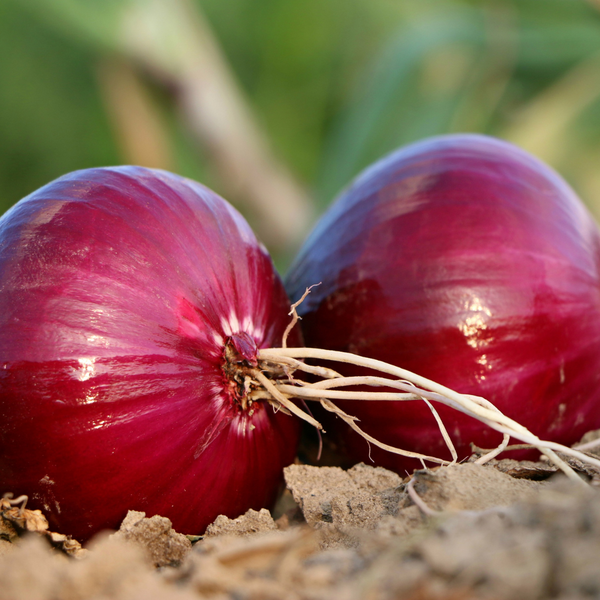
When to Harvest Onion Seeds?
Harvesting onion seeds is a rewarding experience, but it requires patience and careful attention to the plant's growth and development. Onion seeds can take several months to mature, depending on the variety and growing conditions.
To determine when to harvest onion seeds, it's important to monitor the plant's growth and development. The seed heads will begin to turn brown and dry out as the seeds mature. The seed heads should be left on the plant until they are completely dry and the seeds are fully developed.
Once the seed heads are dry and the seeds are fully developed, they can be harvested. Cut the seed heads from the plant and place them in a paper bag or other container. Gently rub the seed heads between your hands to release the seeds.
Once the seeds have been harvested, they should be stored in a cool, dry place until they are ready to be planted. Onion seeds can remain viable for several years if stored properly.
In addition to harvesting the seeds, onion bulbs can also be harvested for culinary use. Onion bulbs can be harvested when the leaves begin to yellow and wilt. Gently dig up the bulbs and allow them to dry in a cool, dry place for several days. Once the bulbs are dry, the outer layer of skin can be removed and the bulbs can be stored in a cool, dry place for several weeks.
When harvesting onion bulbs, it's important to avoid damaging the bulbs or cutting them with gardening tools. This can increase the risk of disease and decrease the shelf life of the bulbs.
Harvesting onion seeds requires patience and careful attention to the plant's growth and development. Monitor the seed heads and wait until they are completely dry and the seeds are fully developed before harvesting. Store the seeds in a cool, dry place until they are ready to be planted. Onion bulbs can also be harvested for culinary use when the leaves begin to yellow and wilt. Be careful not to damage the bulbs when harvesting and store them in a cool, dry place for several weeks.
Now that you know how to grow onions from seeds, are you going to give growing them a try?
We offer several varieties of heirloom onion seeds in our online store. Please be sure to come to check them out! Happy planting!
Onion Seed Assortment | 8 Variety Pack

$15.95
Complete Onion Seeds Collection: 8 Non-Hybrid, Heirloom, Non-GMO Seed Varieties Introducing our 8 Onion Seeds Variety Pack – the perfect collection for home gardeners, chefs, and onion enthusiasts looking to grow a diverse range of flavorful onions! Each variety in… read more



